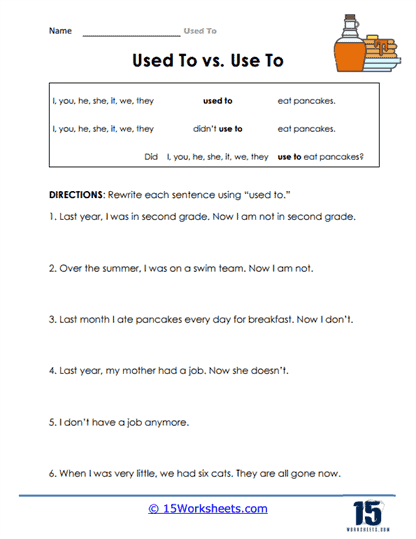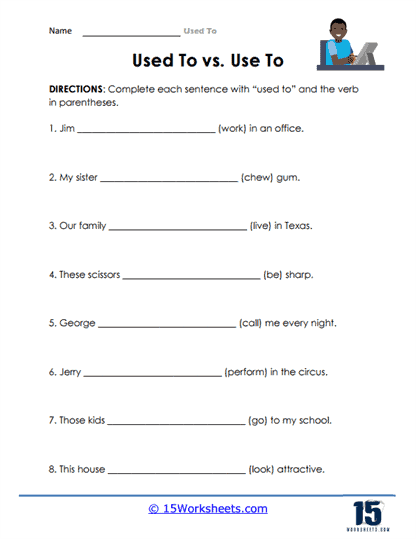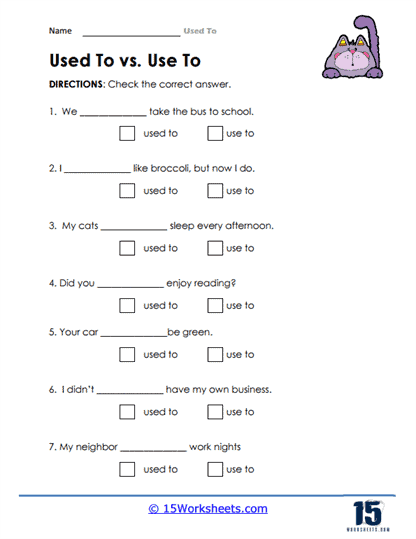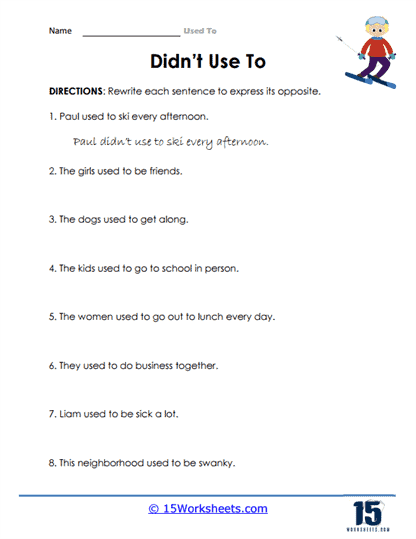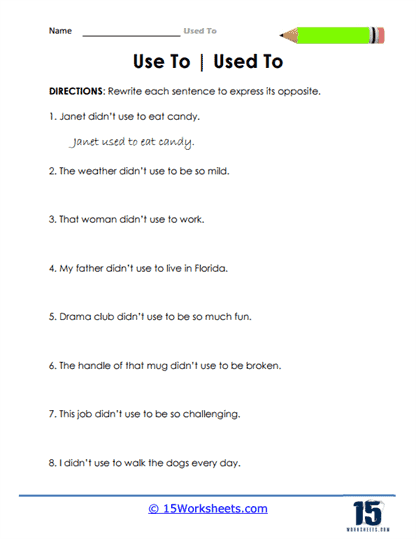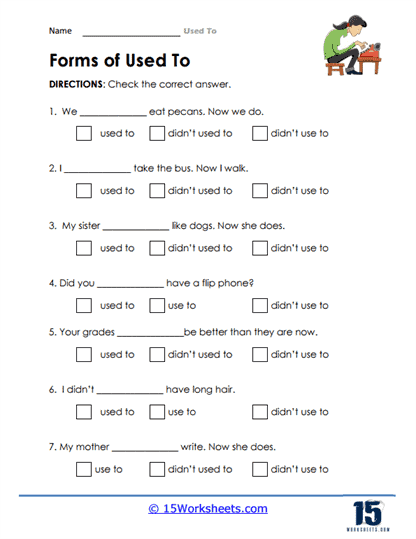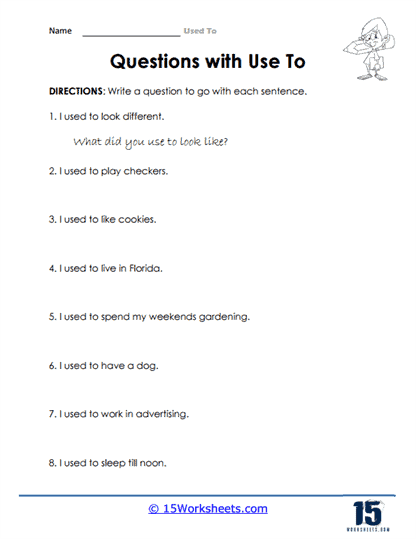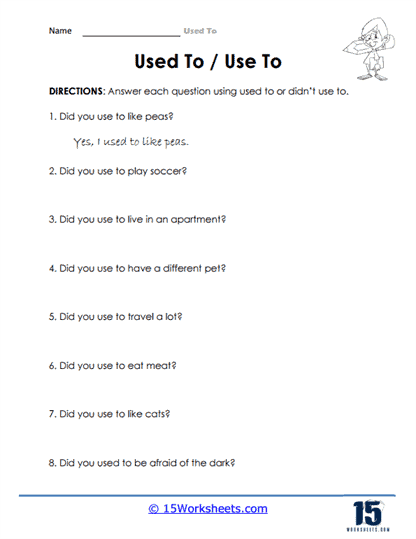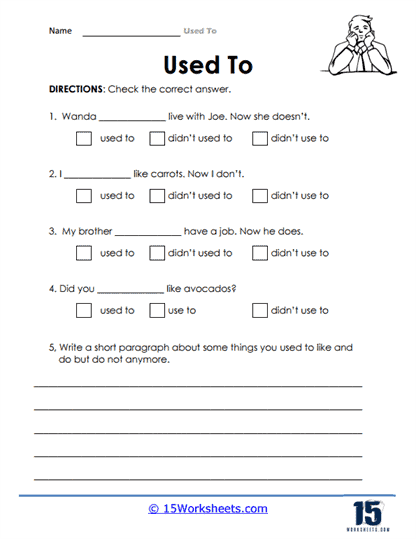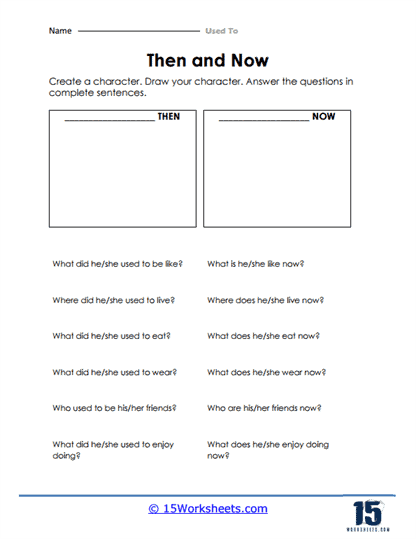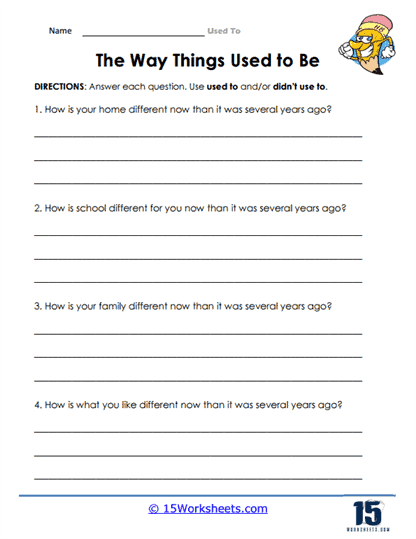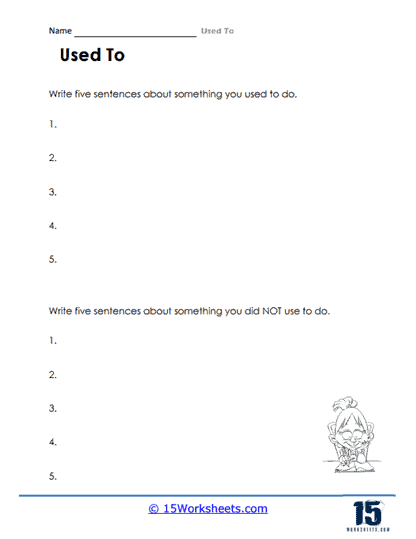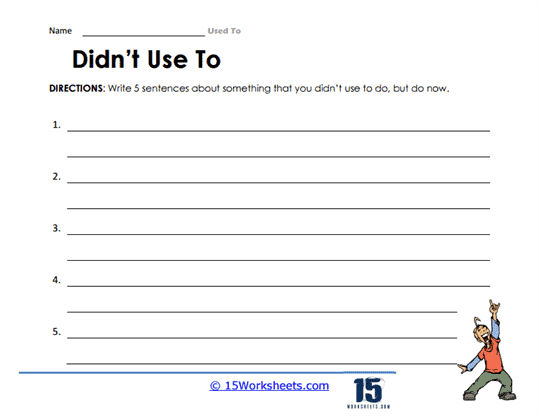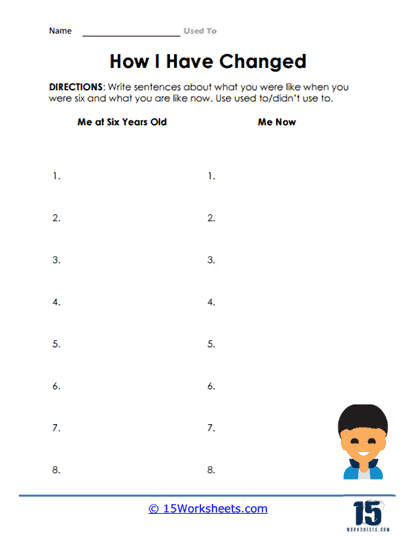Used To vs. Use To Worksheets
All About These 15 Worksheets
These Used To vs. Use To worksheets can help students to differentiate between these two phrases and understand their proper usage in English grammar. “Used to” is a phrase used to describe a past habit or a state that is no longer true, while “use to” is an incorrect spelling of the phrase “used to”.
The worksheets in this collection include a range of exercises and prompts such as fill-in-the-blank exercises, rewriting activities, and short writing prompts. Through these worksheets, students will:
- Rewrite sentences by including proper usage of “used to” and “use to”;
- Complete sentences by adding “used to” and “use to” as appropriate;
- Be familiar with using the negatives of “used to” and “use to” in sentences;
- Understand the form and function of “used to” and “use to”;
- And write their own sentences or questions using “used to”, “use to”, and their negatives.
By providing students with a variety of exercises and prompts, these worksheets can help students to understand the difference between “used to” and “use to”, and enhance their writing and communication skills. It is important to note that “used to” is always spelled with “d” at the end, and “use to” is an incorrect spelling.
Used To vs. Use To and when to use them
“Used to” and “use to” are often confused, but they have different meanings and uses.
“Used to” is a phrase used to describe a past habit or a state that is no longer true. It is always spelled with “d” at the end. For example:
- I used to live in New York City. (I lived there in the past, but not anymore.)
- She used to play the piano when she was young. (She played the piano in the past, but not anymore.)
- They used to visit their grandparents every summer. (They visited their grandparents in the past, but not anymore.)
“Use to” is not a correct spelling of the phrase “used to”. It is a common mistake made by native speakers and English learners alike.
To summarize, “Used to” is used to describe a past habit or state that is no longer true, while “use to” is not a correct spelling and should be avoided. It’s important to note that “used to” can also be used to talk about past facts that are still true, but the focus is on the past time frame. For example:
- The Empire State Building used to be the tallest building in the world. (It was the tallest building in the past, but not anymore.)
Overall, understanding the proper usage of “used to” and avoiding the incorrect spelling “use to” can help learners to communicate more accurately and effectively in English.
Common errors in using “Used To” and “Use To”
The most common error in using “used to” and “use to” in grammar is spelling “use to” instead of “used to”. “Use to” is not a correct spelling of the phrase “used to”. Other common errors include:
- Using “use to” to describe a past habit or state. This is incorrect. The correct phrase is “used to”.
- Using “used to” to talk about a current habit or state. “Used to” is used to describe a past habit or state that is no longer true. If the habit or state is still true, use the present tense.
- Using “used to” with the present tense. This is incorrect. “Used to” is always used with the past tense.
- Using “used to” without a main verb. “Used to” must be followed by a main verb to form a complete sentence.
Examples of common errors:
- She use to play the guitar. (Incorrect – should be “used to”)
- I used to eat cereal for breakfast every day. But now I use to eat eggs. (Incorrect – “use to” is not a correct phrase)
- He used to lives in Paris. (Incorrect – should be “used to live”)
- We used to love this restaurant, but now we use to hate it. (Incorrect – “use to” is not a correct phrase)
By avoiding these common errors, learners can improve their grammar and communicate more accurately in English.

